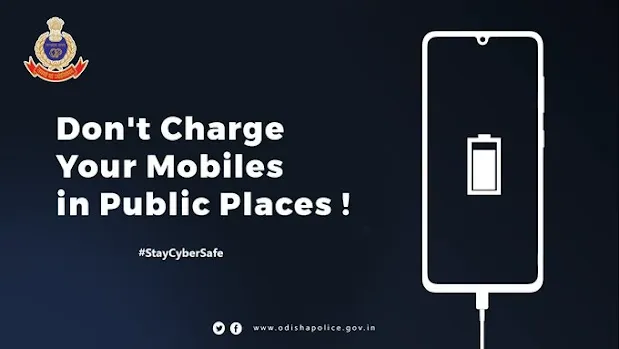Juice Jacking also known as port jacking is a type of cyberattack in which a public USB charging port is tampered with and infected through hardware and software alterations to steal data or install malware on devices connected to it.
Brian Krebs, an investigative journalist, coined the term "Juice Jacking" after carrying out a proof-of-concept attack at DEFCON in 2011.
How Juice Jacking Works
Juice jacking takes advantage of a device's vulnerability when it is connected to a public charging station.
The majority of these attacks target cellphone devices, including Android and iOS phones. Juice jacking attacks are more prevalent on older Android versions.
When you connect your cell phone to your laptop's USB port, you can charge your phone as well as transfer data between the two devices.
That's because USB ports are more than simply power outlets; they feature numerous pins, just only one is required to charge your device. Two of the remaining pins are utilized for data transmission.
When a user connects their device to a USB port for charging, they enable data transfer between devices.
Hackers employ this USB connection feature of public charging stations to get access to mobile devices and steal users' personal information such as passwords, credit card information, addresses, and other sensitive data saved on the target device.
Historically, this type of attack was thought to be a theoretical concept.
It is growing increasingly concerning with incidents recorded in a wide range of public venues such as airports, hotels, and shopping malls.
Recently, the Reserve Bank of India (RBI) issued a warning to mobile phone users against charging their devices via public ports, emphasizing the need to protect personal and financial information while using mobile devices.
Juice jacking applies to any gadget that can be charged by USB port, not only cell phones.
Types of juice jacking
Data theft
Malware installation
Multi-device attack
Multi-device juice jacking attacks infect devices with malware, allowing fraudsters to increase their attack volume and infect multiple devices simultaneously.
Once infected, the device becomes a carrier for infecting additional USB ports, allowing them to spread malware without requiring hackers to take action.
Disabling attack
How do we prevent such attacks?
Juice jacking attacks can be challenging to detect but may be detected by unusual slowness or increased heat on a compromised device.
Never use public charging ports or WiFi:
The first piece of advice is to avoid using public charging stations unless absolutely necessary.
Use a virtual private network (VPN) to encrypt your traffic and shield your data from prying eyes if you must use public Wi-Fi.
Use a power bank
Power banks offer a safe and convenient way to charge devices on the go, eliminating the risk of juice-jacking attacks at public charging stations.Use a USB data blocker
A USB data blocker is a device that shields a phone from juice jacking while using a public charging station. It prevents hackers from loading malware or stealing data through the charging cable.Use a power socket
Disable auto-connect
Disable your device's automatic connection capability, as it may accidentally connect to malicious networks or devices when searching for a charging source.
Update your phone's software regularly
Ensuring that devices have the most recent security upgrades will help reduce the danger of cyberattacks.
Thanks for reading!!!







Post a Comment
Post a Comment